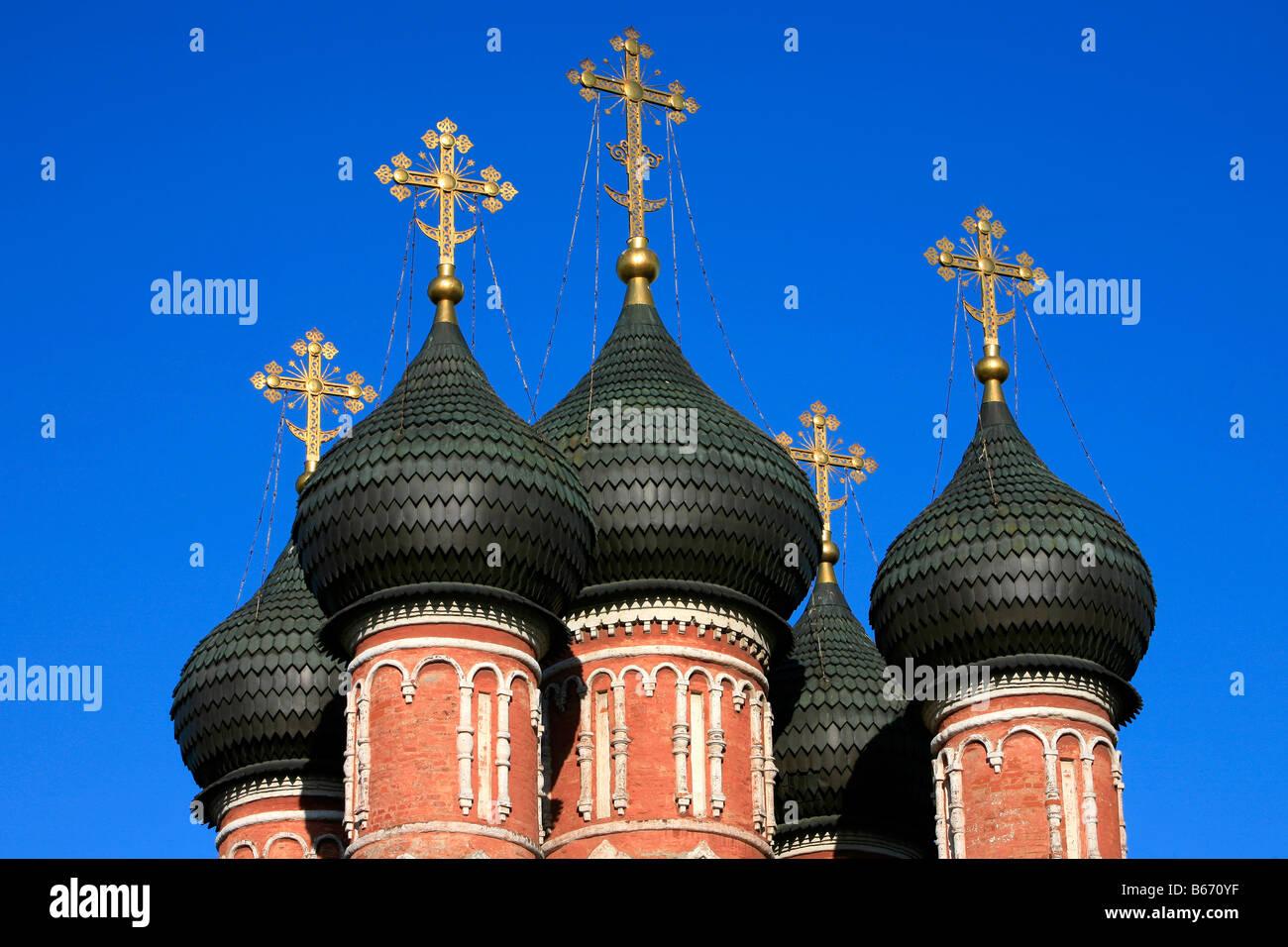Onion domes of the 14th century Russian Orthodox Vysokopetrovsky Monastery in Moscow, Russia

Image details
Contributor:
DE ROCKER / Alamy Stock PhotoImage ID:
B670YFFile size:
52.4 MB (2 MB Compressed download)Releases:
Model - no | Property - noDo I need a release?Dimensions:
5242 x 3493 px | 44.4 x 29.6 cm | 17.5 x 11.6 inches | 300dpiDate taken:
22 April 2008Location:
Petrovka Street, Moscow, Moscow Oblast, Russia, Eastern EuropeMore information:
Vysokopetrovsky Monastery (English: High Monastery of St Peter) is a Russian Orthodox monastery in the Bely Gorod of Moscow commanding a hill whence Petrovka Street descends towards the Kremlin. The monastery is believed to have been founded in the 1320s by Saint Peter of Moscow, the first Russian metropolitan to move his see in Moscow. The cloister gave its name to adjacent Petrovka Street, one of the streets radiating from Red Square. In the late 17th century, the Naryshkin boyars, maternal relatives of Peter the Great, turned the monastery into their family burial place. They had it reconstructed in the Naryshkin Baroque style of architecture associated with their name. In the mid-18th century, several subsidiary structures were added, conceivably to designs by Dmitry Ukhtomsky or Ivan Fyodorovich Michurin. The monastery cathedral, dedicated to St Peter of Moscow, was long regarded as a typical monument of the Naryshkin style and dated to 1692. In the 1970s the detailed studies of sources and excavations of the site revealed that the cathedral had been actually built in 1514-1517 by Aloisio the New. The monastery belltower and monastic cells, commissioned by the Naryshkins, were erected in the 1690s.In 1926 the monastery was closed. In 1992 several buildings of the monastery were returned to Russian Orthodox Church. As of 2005, the buildings are shared by the Russian Orthodox Church and the Moscow Literature Museum.